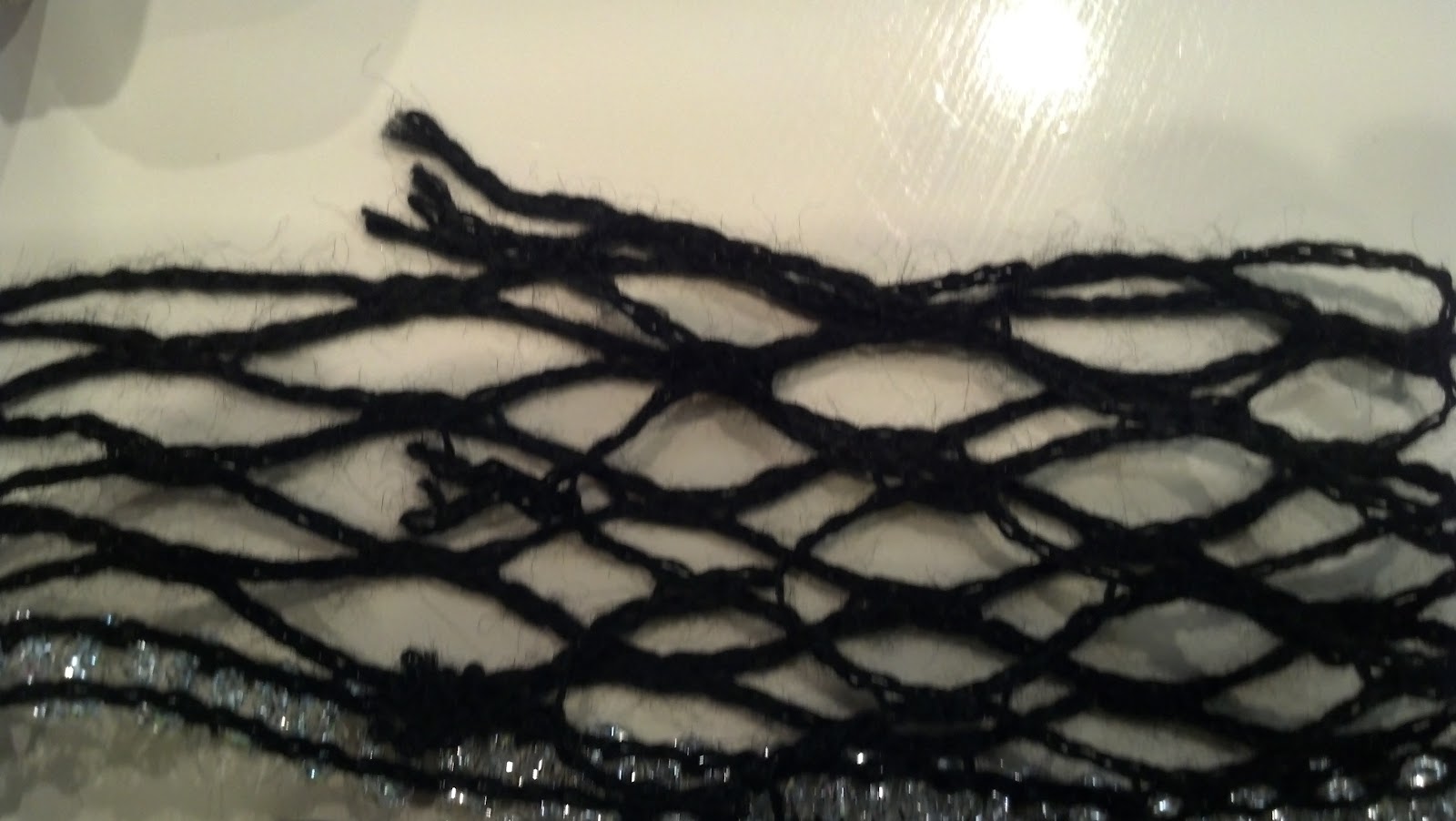Casting On
After preparing the yarn, unroll a foot or two so that the working edge is at the top, and the free edge is at the bottom.
 |
| Raw edge, Starbella Flash (Premier Yarns) |
Fold over the raw edge between the second and third loops so that the second and first loops exactly overlay the third and fourth loops.
 |
| Raw edge has been folded over, matching loops |
 |
| Sashay (Red Heart Boutique) |
Slip the first double loop of the working edge over the left knitting needle (if you knit right-handed) from back to front if you work English or Continental, or from back to front if you work Eastern.
 |
| Casting on the first stitch |
Slip the second double-loop over the needle (this should bring the raw edge closer to the middle of the work.
 |
| The second stitch |
Slip the first single loop (the third loop from the folded edge) over the needle. Continue until you have slipped as many loops over the needle as the number of stitches you need to cast on.
 |
| A short row of cast-on stitches |
The First Row
 |
| Note how Flaunt is kept tensioned and untwisted to start the row. |
Hold the yarn spread-out and flat, draped from front to back over your index finger, using your thumb and second or third fingers to tension the yarn and stretch the spaces made by threads 1 and 2 (or on a ribbon yarn such as Red Heart Boutique
Ribbons, between the working-edge thread and the ribbon).
 |
| Sashay tensioned for knitting |
Insert the right needle through the first stitch as usual. Use the right needle to pick up thread 1 (the working edge) of the ball yarn from the nearest unworked loop. Complete the stitch as usual.
 |
| Starbella Flash tensioned for knitting |
Repeat to the end of the row, treating the loops of the folded-over edge together with the loops of yarn with which they were matched for the initial cast-on.
 |
| Finishing the first row: work in the folded-over edge |
Turn the work so that the stitches are on the left needle (if you knit right-handed, or the right needle if you knit left-handed), being careful not to twist the yarn.
The Second Row
Knit (or purl) as usual.
 |
Flaunt after three rows.
Note how the ribbon nests over each previous row. |
 |
| Sashay has been kept untwisted through multiple rows |
A tip about knitting needles: If you expect to have to put your work down for any reason, you will need to make sure that your stitches don't fall off either the back or the tip of the needle, as well as making sure that threads other than the working thread don't loop over either end of the needle and confuse your stitch count. One way to do this is to make a set of four hardboard or foam core disks, about 1.25" (3 cm) in diameter, with center holes just large enough to fit your needles through. Thread one disk to the back of each needle before casting on; put one at the end of work on each needle before putting it down. Another method is to knit on round needles, and bind the two needle ends together.
 |
| A hardboard disk keeps stitches from slipping off the back end |













No comments:
Post a Comment